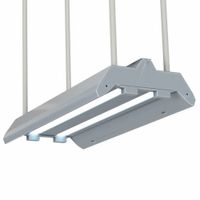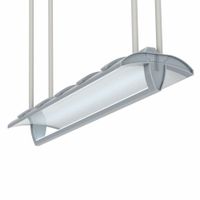- Home
- Lighting
- Lighting Fixtures Retrofit Kits
- Bay Lights
- Linear Led Bay Light Fixtures
Linear LED Bay Light Fixtures
The long, linear body of these bay lights provides more coverage per fixture than round bay lights. These LED lights install in new lighting layouts or upgrade fluorescent installations to LED. They convert to LED one fixture at a time, match the existing lighting layout, and maintain a consistent l .....Read More
Frequently Asked Questions
What are the benefits of using linear bay lights over round bay lights?
How do LED bay lights compare to fluorescent bay lights in terms of energy efficiency?
What factors should be considered when selecting bay lights for a large space?
How do you install LED bay lights in an existing fluorescent lighting layout?
What is the typical lifespan of LED bay lights compared to fluorescent lights?
What are the ideal mounting heights for high bay and low bay lights?
How do you determine the appropriate lumen output for bay lights in a specific area?


